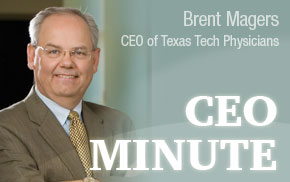 We like to tease our neighbors to the far west, I mean California, about some of their
laws. But, their laws are often a harbinger of things headed our way. You may like
or dislike that fact, but it has happened many times. I read recently about something
California calls an OSHPD (Office of Statewide Health Planning and Development) report.
It is a report hospitals are required to make available online that tells how much
each hospital gets from Medicare, Medicaid and the uninsured. It tells what a hospital
charges and its net income. Basically, the report is supposed to help the consumer
make a better choice. It is pronounced, the osh-pod report.
We like to tease our neighbors to the far west, I mean California, about some of their
laws. But, their laws are often a harbinger of things headed our way. You may like
or dislike that fact, but it has happened many times. I read recently about something
California calls an OSHPD (Office of Statewide Health Planning and Development) report.
It is a report hospitals are required to make available online that tells how much
each hospital gets from Medicare, Medicaid and the uninsured. It tells what a hospital
charges and its net income. Basically, the report is supposed to help the consumer
make a better choice. It is pronounced, the osh-pod report.Could something like this be headed to Texas? I am an ex-officio member of Texas Institute of Health Care Quality and Efficiency — an entity created last year by the Texas Legislature whose purpose is to control rising health care costs and improve patient outcomes. Last week I was in Austin and participated in an interesting discussion on this question: “Should hospitals and doctors be required to reveal in advance to prospective patients the amount the provider would accept as payment-in-full for professional services?”
It is worded that way, the “payment-in-full” part, because everyone understands that charges do not mean much — it is what a provider will accept as payment-in-full that counts, or, put another way, it is the accepted contract rate that matters.
I am not sure how all of this will turn out, it is up to the Legislature, and I will not use this column to editorialize. It is an interesting discussion — there are those who would like to see more openness in pricing among health care providers, so health care consumers could “shop” around. And, the other view is that this would be very difficult to accomplish because these payments are carefully negotiated contractual arrangements between payers and providers and are generally meant to be confidential. Plus, each patient’s situation is a bit different.
One thing is for sure: with today’s high deductible insurance plans, consumers are bearing increasingly more of the financial responsibility for health care. I have read recently that some major health systems, including Minnesota's Mayo Clinic and Geisinger Health System in Pennsylvania, are meeting with patients to create easier-to-read bills, thereby improving collections and satisfaction. This would appear to be a good thing and something we can do.
